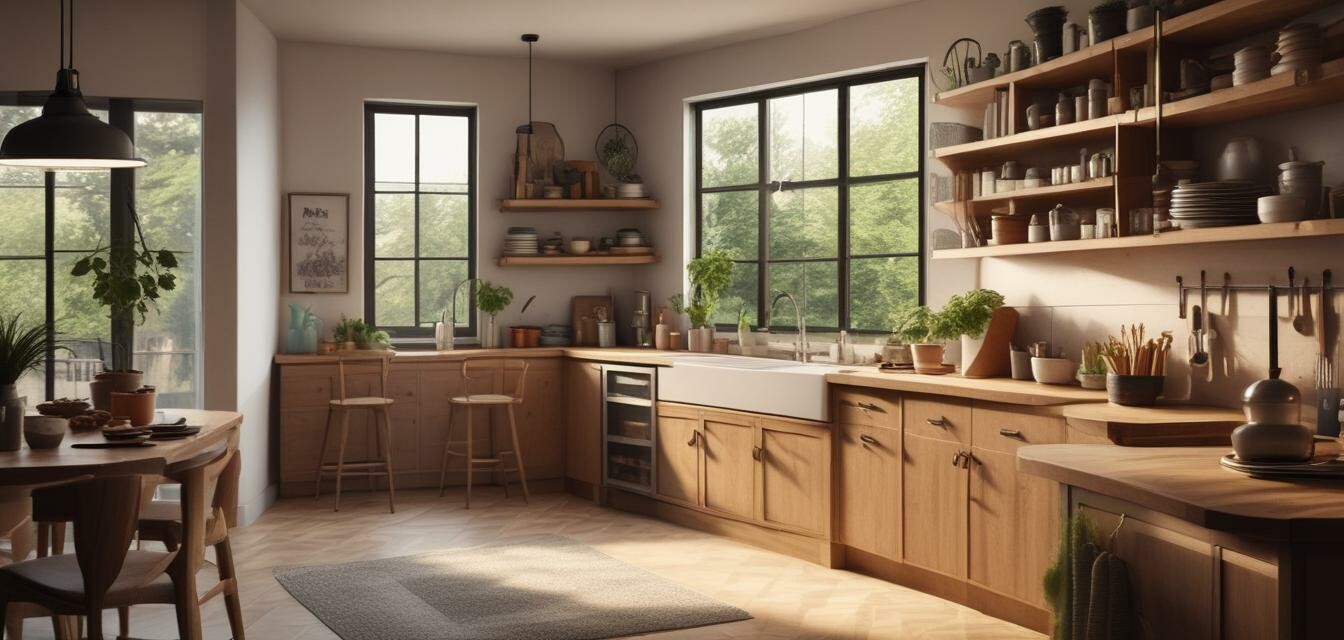
Building a Sustainable Kitchen: The Role of Wood
Key Takeaways
- Wooden elements enhance the aesthetic appeal of your kitchen while promoting sustainability.
- Choosing responsibly sourced wood reduces environmental impact.
- Wood products can be easily maintained and have a long lifespan.
- Incorporating eco-friendly finishes can protect wooden surfaces and promote sustainability.
- Wooden items add warmth and charm to your kitchen space.
Creating a sustainable kitchen involves more than merely adopting eco-friendly practices; it significantly includes utilizing natural materials, among which wood stands out as a premium choice. Wooden elements not only add beauty and warmth but also contribute to a healthier environment. In this article, we delve into how incorporating wood into your kitchen can lead to a sustainable and stylish culinary space.
The benefits of using wood in your sustainable kitchen
Wood has been a favored material in kitchen design for centuries, cherished for its aesthetic qualities and versatility. When chosen and treated responsibly, its benefits significantly extend to sustainability efforts. Here are some ways wood contributes to a sustainable kitchen:
- Durability: Quality wood products can last a lifetime, reducing the need for replacements.
- Biodegradability: Unlike plastic, wood is a natural material that can decompose, thus minimizing landfill waste.
- Climate control: Wood has natural insulating properties, which can help maintain temperature efficiently.
- Carbon footprint reduction: Locally sourced wood minimizes transportation emissions.
Choosing sustainable wood products
Choosing the right type of wood is crucial for creating a sustainable kitchen. Here are a few guidelines to consider:
| Wood Type | Sustainability Rating | Notes |
|---|---|---|
| Reclaimed Wood | Excellent | Reduces waste by repurposing existing wood. |
| Bamboo | Good | Fast-growing and renewable resource. |
| Hardwood (FSC Certified) | Good | From sustainably managed forests. |
| Plywood (Certified) | Fair | Can be eco-friendly if sourced responsibly. |
Incorporating wooden elements in your kitchen
Here are some practical ways to introduce wood into your kitchen design:
- Cabinetry: Custom wooden cabinets can provide both storage and style.
- Counters and Tables: Solid wood countertops add elegance and functionality.
- Flooring: Wooden floors not only offer warmth but can also be sustainably sourced.
- Utensils and Kitchenware: Choose wooden utensils and cutting boards for an eco-friendly option.
Maintaining wood in your sustainable kitchen
Proper care and maintenance are vital to ensuring the longevity of wooden products. Here are some tips:
Tips for Beginners
- Use eco-friendly cleaning products to avoid damaging the finish.
- Regularly apply wood conditioner to maintain moisture and prevent cracking.
- Avoid exposure to excessive moisture; clean spills immediately.
- Polish with natural oils for a beautiful shine.
Eco-friendly finishes for wooden products
Protecting your wooden kitchen surfaces with eco-friendly finishes is essential not only for preservation but also for the environment. Consider these options:
| Finish Type | Advantages |
|---|---|
| Linseed Oil | Natural and non-toxic, enhances wood grain. |
| Tung Oil | Water-resistant and safe for food contact surfaces. |
| Beeswax | Provides a protective coating and a subtle sheen. |
Conclusion
Building a sustainable kitchen doesn't just mean prioritizing energy-efficient appliances or reducing waste; it’s also about the materials you choose. With wooden elements enhancing both the aesthetic and environmental facets of your kitchen, they play a significant role in sustainability. By selecting responsibly sourced wood, utilizing eco-friendly finishes, and practicing proper maintenance, you can create a warm, beautiful, and responsible kitchen space that you will cherish for years to come.
Pros
- Eco-friendly and biodegradable.
- Durable and long-lasting products.
- Adds a warm and inviting atmosphere.
- Various design options available.
Cons
- Requires proper maintenance.
- Higher upfront cost compared to synthetic materials.
- May warp in high moisture areas without proper care.
To delve deeper into sustainable practices within the wood product industry, feel free to explore our sections on sustainable practices and wood finishing products. Equip yourself with knowledge that fosters an appreciation for craftsmanship and nature!